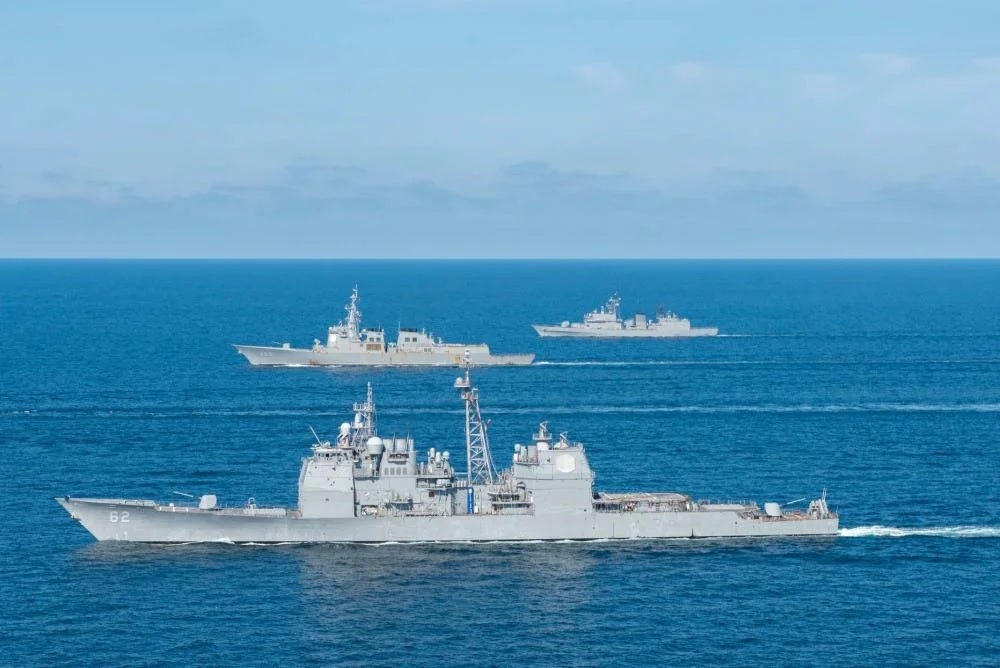
The maritime forces of the US, South Korea (ROK) and Japan have begun a trilateral anti-submarine warfare (ASW) exercise amid increasing tensions with North Korea.
The drills are being conducted in the waters of the Korean Peninsula’s east region. They aim to allow the three nations to bolster interoperability and skills.
The exercise involves participation from the ROK Navy’s ROKS Munmu The Great (DDH 976) and the Japan Maritime Self-Defense Force’s (JMSDF) JMSDF destroyer, JS Asahi (DD 119).
The US Navy’s Carrier Strike Group (CSG)-5, Nimitz-class USS Ronald Reagan (CVN 76), Ticonderoga-class USS Chancellorsville (DDG 62) and Arleigh Burke-class USS Benfold (DDG 65) are also taking part in the exercise.
This comes after North Korea (DPRK) carried out test-firing of short-range ballistic missiles this week.
According to a Reuters report, South Korea’s military has claimed that the two missiles were launched towards the east coast from the Sunchon in North Korea’s South Pyongan province on 29 September between 8:48pm and 8:57pm.
This is North Korea’s third missile launch in five days. The first was conducted on 25 September, followed by another on 28 September.
The DPRK’s latest launch was conducted hours after US Vice-President Kamala Harris arrived in Seoul on 29 September.
In a statement, the US Embassy & Consulate in the ROK said: “(Harris) and President Yoon Suk-yeol reaffirmed alignment on the DPRK and goal of complete denuclearisation of the Korean Peninsula.
“They condemned DPRK’s provocative nuclear rhetoric and ballistic missile launches, in violation of UN Security Council resolutions, and they discussed our response to potential future provocations, including through trilateral cooperation with Japan.”
In a separate development, the US Marine Aircraft Group (MAG)-12 has conducted a live-fire test with an AIM-9X Sidewinder missile from Japan’s southern coast to exercise air-to-air warfare capabilities.




